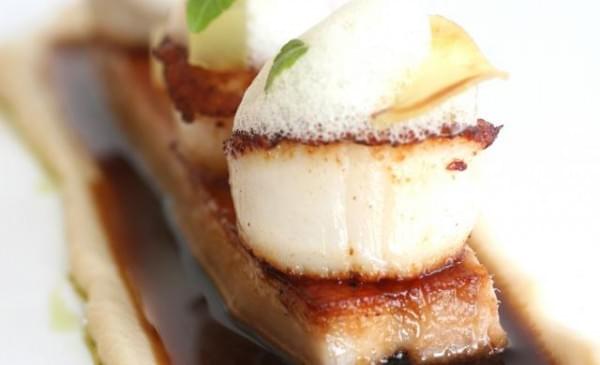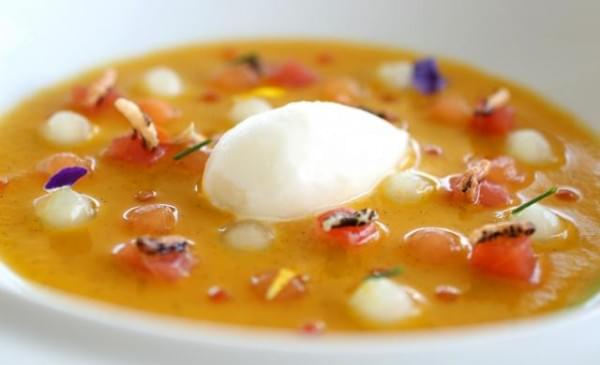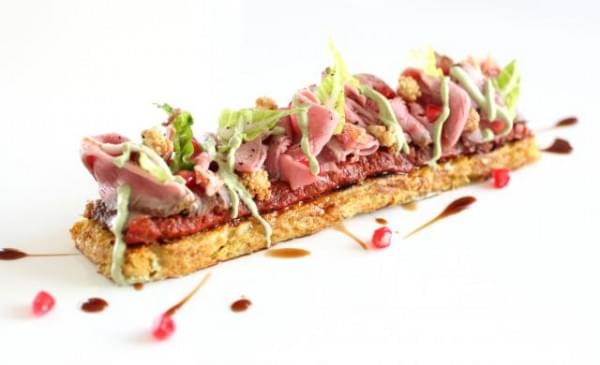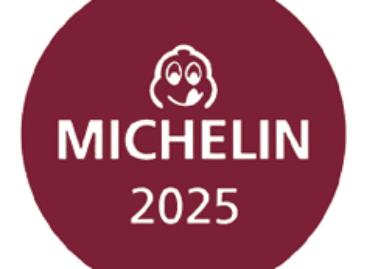Basic molecular gastronomy
Molecular gastronomy or molecular cuisine is the science of cooking but it is commonly used to describe a new style of cuisine in which chefs explore new culinary possibilities in the kitchen by embracing sensory and food science, borrowing tools from the science lab and ingredients from the food industry and concocting surprise after surprise for their diners. Formally, the term molecular gastronomy refers to the scientific discipline that studies the physical and chemical processes that occur while cooking. Molecular gastronomy seeks to investigate and explain the chemical reasons behind the transformation of ingredients, as well as the social, artistic and technical components of culinary and gastronomic phenomena in general. The term Molecular Gastronomy was born in 1992 (complete history on this post: Molecular Gastronomy History).

Many of these modern chefs do not accept the term molecular Cointreau caviar gastronomy to describe their style of cooking and prefer other terms like “modern cuisine”, “modernist cuisine”, “experimental cuisine” or “avant-garde cuisine”. Heston Blumenthal says molecular gastronomy makes cuisine sound elitist and inaccessible, as though you need a BSc to enjoy it. In the end, molecular gastronomy or molecular cuisine – or whatever you want to call this cooking style – refers to experimental restaurant cooking driven by the desire of modern cooks to explore the world's wide variety of ingredients, tools and techniques. Molecular gastronomy science research starts in the kitchen and the learnings of how food tastes and behaves enable these chefs to cook with it and discover new sensory pleasures with it.
Molecular gastronomy experiments have resulted in new innovative dishes like hot gelatins, airs, faux caviar, spherical ravioli, crab ice cream and olive oil spiral. Ferran Adria from El Bulli restaurant used alginates to create his system of spherification which gelled spheres that literally burst in your mouth. Heston Blumenthal from The Fat Duck restaurant applied the learnings of the ability of fat to hold flavour to create a dish that had three flavours -basil, olive and onion – and each of them was perceived in turn. The potential of molecular gastronomy is enormous. It is revolutionizing traditional cooking and transforming eating into a whole new emotional and sensory experience.
Pea ravioli in bath When people hear molecular gastronomy or molecular cuisine for the first time they often mistakenly view it as unhealthy, synthetic, chemical, dehumanizing and unnatural. This is not surprising given that molecular gastronomy often relies on fuming flasks of liquid nitrogen, led-blinking water baths, syringes, tabletop distilleries, PH meters and shelves of food chemicals with names like carrageenan, maltodextrin and xanthan. My wife's first reaction when I surprised her with a liquid pea spherical raviolo was to say “Can I eat this? Is this safe? Why don't you try it first?”.
The truth is that the “chemicals” used in molecular gastronomy are all of biological origin. Even though they have been purified and some of them processed, the raw material origin is usually marine, plant, animal or microbial. These additives are also used in very, very small amounts and have been approved by EU standards. And the science lab equipment used just helps modern gastronomy cooks to do simple things like maintaining the temperature of the cooking water constant (water bath) , cooling food at extremely low temperatures fast (liquid nitrogen) or extract flavour from food (evaporator). There is still some debate out there about the healthiness of molecular gastronomy but I personally believe there are other bigger health issues in everyday food we consume. In the end, you are not going to be eating liquid pea spheres every day anyway.


Related news
Related news
Ice cream as a season-extending product
🎧 Hallgasd a cikket: Lejátszás Szünet Folytatás Leállítás Nyelv: Auto…
Read more >The stars were shining bright
🎧 Hallgasd a cikket: Lejátszás Szünet Folytatás Leállítás Nyelv: Auto…
Read more >The 2024 tourism record was achieved in 11 months this year
🎧 Hallgasd a cikket: Lejátszás Szünet Folytatás Leállítás Nyelv: Auto…
Read more >



